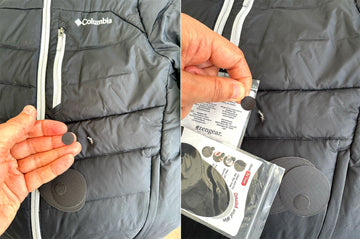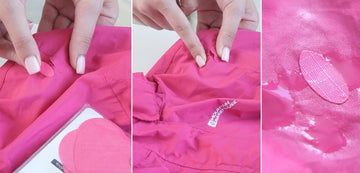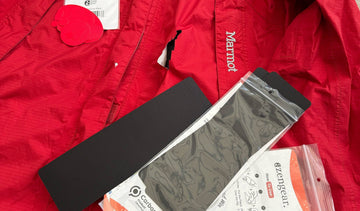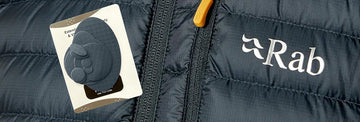Finding the Perfect Fit: How to Measure Your Feet
by Emily Jannet on Nov 01, 2023
When it comes to running, one of the most critical factors in ensuring your comfort and performance is often overlooked - the size of your feet. Properly fitting running shoes are essential for preventing discomfort, blisters, and even more serious injuries. Many runners, both beginners and seasoned athletes, often neglect the importance of measuring their feet correctly. In this comprehensive guide, we will explain why measuring your feet is crucial, how to do it accurately, and offer tips for choosing the perfect running shoes and socks.
The Importance of Measuring Your Feet
Before diving into the "how," let's first understand the "why." Measuring your feet for running shoes is vital for several reasons:
-
Comfort
Ill-fitting shoes can cause discomfort and pain, making your running experience far less enjoyable. This discomfort can range from minor annoyances like blisters to more severe issues such as black toenails, bunions, or stress fractures.
-
Injury Prevention
Wearing shoes that do not properly support your feet can lead to injuries. A poorly fitting shoe can change your gait, put undue stress on your muscles and joints, and increase the risk of overuse injuries, such as shin splints and Achilles tendonitis.
-
Performance
The right shoe can significantly impact your running performance. Properly fitted shoes can provide better support, stability, and cushioning, which can enhance your running efficiency, speed, and endurance.
-
Longevity
Lastly, choosing the correct shoe size helps extend the life of your running shoes. Shoes that fit well experience less wear and tear, ensuring that your investment lasts longer.
How to Measure Your Feet
Now that we've established the importance of measuring your feet for running, let's explore the steps to do it accurately.
-
Gather the Right Tools
To measure your feet, you will need:
- A piece of paper larger than your foot
- A pencil or pen
- A ruler
- A measuring tape
-
Prepare Your Feet
Sit down in a chair and place your foot flat on the piece of paper. Make sure your leg is at a 90-degree angle to the floor. If you are planning to run in specific socks, wear them during the measurement.
-
Trace Your Foot
Hold the pencil or pen perpendicular to the paper and carefully trace the outline of your foot. Ensure that the pen is in constant contact with your foot and that you don't skew the shape of your foot by angling the pen. You should also keep your weight evenly distributed on your foot while tracing.
-
Measure the Length
Use the ruler to measure the length from the tip of your big toe to the back of your heel in centimeters or inches. Make sure you measure both feet as they may be slightly different in size. Use the measurement from your larger foot when choosing your shoe size.
-
Measure the Width
Measure the width of your foot at the widest part. It's usually around the ball of your foot. Again, measure both feet and use the wider measurement.
-
Determine Your Shoe Size
Now that you have your foot length and width measurements, it's time to determine your shoe size. Shoe sizes can vary between brands and models, so it's crucial to check the size chart provided by the manufacturer for the specific shoe you're interested in.
To find your size, you can refer to conversion charts that are readily available online, and they can help you translate your measurements into the appropriate shoe size.
Additional Tips for Choosing Running Shoes
Measuring your feet accurately is just the first step. To make sure you select the best running shoes for your needs, consider the following tips:
-
Shop in the Afternoon
Feet tend to swell throughout the day, so it's a good idea to shop for shoes in the afternoon when your feet are at their largest. This helps ensure that your shoes won't feel tight when you're running.
-
Try on Multiple Sizes
Sizes can vary between brands and models. Once you've determined your size, try on different shoes in that size to find the best fit. Don't hesitate to try half sizes or different widths if you feel that your chosen size isn't quite right.
-
Pay Attention to Shoe Type
Running shoes come in various types, including neutral, stability, and motion control. Your foot type and running style will determine which type of shoe is best for you. If you're unsure, consult with a knowledgeable salesperson or a podiatrist.
-
Consider Arch Support
Your arch type can significantly affect your choice of running shoe. If you have high or low arches, consider shoes with the appropriate level of arch support to avoid discomfort and injury.
-
Test the Fit
When trying on shoes, pay attention to how they feel on your feet. Make sure there's enough space for your toes to wiggle, but not so much that your foot slides around inside the shoe. Walk or jog around the store to assess the comfort and fit while in motion.
-
Don't Overlook Socks
The socks you wear can also affect the fit of your running shoes. Choose moisture-wicking socks that are suitable for your running conditions and season. Wear the socks you plan to use during your runs when trying on shoes to ensure the right fit.
Conclusion
Properly measuring your feet and selecting the right running shoes is essential for your comfort, performance, and injury prevention. By following the steps outlined in this guide, you can accurately measure your feet and confidently choose the perfect pair of running shoes. Remember that the investment you make in selecting the right shoes will pay off in terms of comfort, performance, and the longevity of your running gear. So, the next time you lace up your running shoes, you'll know that you've taken the right steps for a great run.





